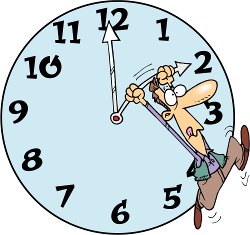Adverb Word Order
In English, we can use adverbs and adverb phrases to make sentences more descriptive.
Most adverbs can be placed in different parts of a sentence without changing the meaning of the sentence. However, the placement of some adverbs does change the meaning of a sentence. In addition, different positions can emphasize different things.
So there are some rules on adverb word order , and you should definitely know them.
See also in this series on sentence structure and word order:
- Basic Sentence Structures in the English Language
- Word Order in English
- Adverb Word Order
- Using Word Order for Emphasis
- English Adjectives, Determiners and Order of Adjectives in a Sentence
- English Parts of Speech
- Understanding the Parts of a Sentence
- Types of Sentences in English
Click Here for Step-by-Step Rules, Stories and Exercises to Practice All English Tenses
An adverb is a word that describes or gives more information about a verb,
an adjective,
another adverb,
or even an entire sentence.
Examples:
hard suddenly today too never very
In a previous lesson, we learned the basics of adverb word order in a sentence. You can review that lesson here: Word Order in English: Adverbs.
Here is a quick review of that lesson:
Adverbs and adverb phrases can be placed in three places in a sentence:
1. At the front of the sentence, before the subject
- Yesterday,
the
teacher taught the students.
- The students will take the test
tomorrow.
- before the verb:
She often studies before class.
- after the verb:
The student works quietly at her desk.
- in the middle of a group of verbs:
The teacher will quickly teach the students.

Adverbs are usually placed near the verb that they modify. Most adverbs can be placed in any of the positions in a sentence without changing the meaning of the sentence.
(But different placements emphasize different things. Placing the adverb at the end gives more emphasis to the adverb.)
Example:
- Suddenly, I ran to the door.
- I suddenly ran to the door.
- I ran to the door suddenly.
The placement of suddenly does not change the meaning of the sentence.
However, the placement of some adverbs can greatly change the meaning of a sentence.
Example:
- Only I love you. (I love you. Nobody else loves you.)
- I only love you. (I love you. I do not love anything else.)
- I love only you. (You are the only person I love. I do not love anybody else.)
- I love you only. (You are the only person I love. I do not love anybody else.)
The order of English words is important if you want to communicate your thoughts and ideas. You can review basic English word order with this lesson: Word Order in English.
Types of adverbs
adverbs of manner
adverbs of place
adverbs of frequency
adverbs of time
adverb clauses of purpose / reason
adverbs of degree
order of adverbs: more than one adverb
Adverbs of manner
Adverbs of manner tell us how an action is done or happens. They answer the following question:weakly happily sadly hard fast quietly slowly roughly
greedily nicely badly hungrily angrily thankfully
Adverbs of manner are usually placed after the main verb or after the object in a sentence.
After the main verb
-
She sings well.
-
She sings loudly.
- She sings beautifully.

After the object
-
She sings the song well.
-
She sings the song loudly.
- She sings the song beautifully.
An adverb of manner cannot be placed between a verb and its direct object. The adverb must be placed before the verb or at the end of the clause.
Incorrect:
- She cleans quickly the house.
-
She cleans the house quickly.
-
She quickly cleans the house.

Incorrect:
-
He walks slowly the dog.
-
He walks the dog slowly.
- He slowly walks the dog.
When there is a preposition before the verb’s object, place the adverb of manner either before the preposition, before the verb, or after the object.
Before the preposition
-
She listened secretly to their conversation.
- Tom climbed weakly out of bed.
Before the verb
-
She secretly listened to their conversation.
- Tom weakly climbed out of bed.
After the object
-
She listened to their conversation secretly.
- Tom climbed out of bed weakly.

Return to "Types of adverbs"
Adverbs of place
Adverbs of place show us the location of the action or state. They answer the following question:anywhere abroad up down out in

Adverbs of place are usually placed after the main verb or at the end of the clause they modify.
After the main verb
-
He ran home.
-
He ran outside to his car.
- He ran everywhere with his mom.
At the end of the clause
-
He ran all the way home.
-
He ran to his car outside by the garage.
- He ran with his mom everywhere.
Here and there are special adverbs of place. They have special rules.
-
The winner is here.
-
Put the book over there.
- She walks there every morning.
Here and there can also be placed at the beginning of a sentence to add emphasis.
If the subject of the sentence is a noun, here and there are followed by a verb.
- Here is the winner!
-
Here is my sister!
-
There goes our car!
- There went my fox!

If the subject of the sentence is a pronoun, here and there are followed by the pronoun.
- Here she is!
-
Here it is!
-
There it is!
-
There they are!
Adverbs of frequency
Adverbs of frequency show us the rate of the action or state. They answer the following question:Adverbs of frequency are usually placed before the main verb but after auxiliary (helping) verbs.
Exception: When the main verb is to be, the adverb is placed after the main verb.
Before the main verb
-
I always brush my teeth after eating food.
- Nick usually washes the dishes.
-
We often meet to chat.

Before the main verb, but after the auxiliary verb
-
She has sometimes asked for my advice.
-
We have rarely talked on the phone.
-
Nick will never make a million dollars.
Adverbs of frequency with the verb to be
-
I am always happy.
-
He is usually here on time.
- They are occasionally late.

Some adverbs of frequency can also be placed at the beginning or end of a sentence to add emphasis to the meaning of the adverb.
- Occasionally they are late.
- They are late occasionally.
- Sometimes I like children.
- I like children sometimes.

Return to "Types of adverbs"
Adverbs of time
Adverbs of time show us the time of the action or state. They answer the following question:early before lately last year

Adverbs of time can be used to create emphasis in a sentence. Adverbs of time are most commonly put at the end of a sentence, but they can sometimes be placed at the beginning of the sentence to emphasize the time.
Examples:
-
I will study now.
-
Now I will study. (The time is more important.

-
She will study later.
-
Later she will study. (The time is more important.)
Adverb clause of purpose / reason
An adverb clause of purpose (or reason) is a clause that tells us the
reason the action is happening. An adverb clause cannot be by itself as
a sentence. It must be part of a sentence. An adverb clause of reason usually begins with subordinating conjunctions like because, as, since, and that.
-
I exercise because I enjoy it.
-
My sister says that you are kind.
-
He works two jobs since he is in debt.
Using infinitive verbs to form adverbs
An infinitive is just the basic form of a verb: to + verb.You can use the infinitive verb to form an adverb clause of purpose/reason.
-
She runs fast to catch the train. (to catch = infinitive)
-
Mom walks outside to get the mail. (to get = infinitive)
- She goes home at 6:00 p.m. to cook dinner. (to cook = infinitive)

Adverbs of degree
Adverbs of degree show us the strength or degree of the action or
state. They answer the following questions:
almost too enough just quite extremely
Adverbs of degree are usually placed before the adjective, adverb, or verb that they modify.
-
She is totally finished.
- She is a perfectly happy girl.
- He is extremely tired.

There are exceptions to this rule. The words too, enough, very, and extremely are examples of adverbs of degree. They have their own rules.
The adverb too has two meanings.
- Too meaning also
- Too meaning excessively
Too meaning also is placed at the end of the clause it modifies, often at the end of the sentence.
-
She is happy too.
-
Do you want to go too?
-
Tim likes Jill, and Jill likes Tim too.

Too = excessively
Too meaning excessively is placed before the adjective or adverb it modifies.
-
The ice cream is too sweet.
-
He is too short.
-
Isn’t he too big for that shirt?
- The coffee is too hot.

When too is used like this, the modified word is often followed by to + infinitive.
-
The ice cream is too sweet to eat fast.
-
He is too short to see over the fence.
- The tea is too hot to drink.
The adverb very
The adverb very means extremely or really.
The adverb very is placed before the adjective or adverb it modifies to make its meaning stronger.
-
I am very tired.
-
She is very short.
- He can run very fast.

Order of adverbs:
more than one adverb in a sentence
When there is more than one adverb in a sentence describing a verb,
they usually go in this order: manner, place (location), frequency,
time, reason/purpose.
It is uncommon to use all five types of adverbs to modify the same word. If a sentence uses two or more adverbs, it is good to follow this order to sound natural.
The adverbs in the sentences below are color-coded to show order of adverbs.
-
She runs quickly outside every morning before school to lose weight.
-
The teacher gives instructions loudly in the classroom at the
end of the day as the students prepare to go home.
-
Dad walks impatiently home every evening after work.
- Tim reads there each day after lunch.
When there is more than one of the same type of adverb, we order them based on how specific the information is. The most specific adverb is placed first.
-
She runs outside at 6:30 a.m. (more specific) before school (less specific) to lose weight.

- Tim reads on the floor (more specific) in his bedroom (less specific) after lunch.

Get Updates, Special Offers, and English Resources
Download your FREE GIFT (the first two chapters of
English Short Stories Book and Workbook)
as soon as you join!

By submitting your email, you consent to receiving updates and newsletters from us and to the sharing of your personal data with third parties for the purposes of sending you communications. We will not spam you. You can unsubscribe at any time. For more information, please see our privacy policy.
Return
from Adverb Word Order in English to
Easy English Grammar





